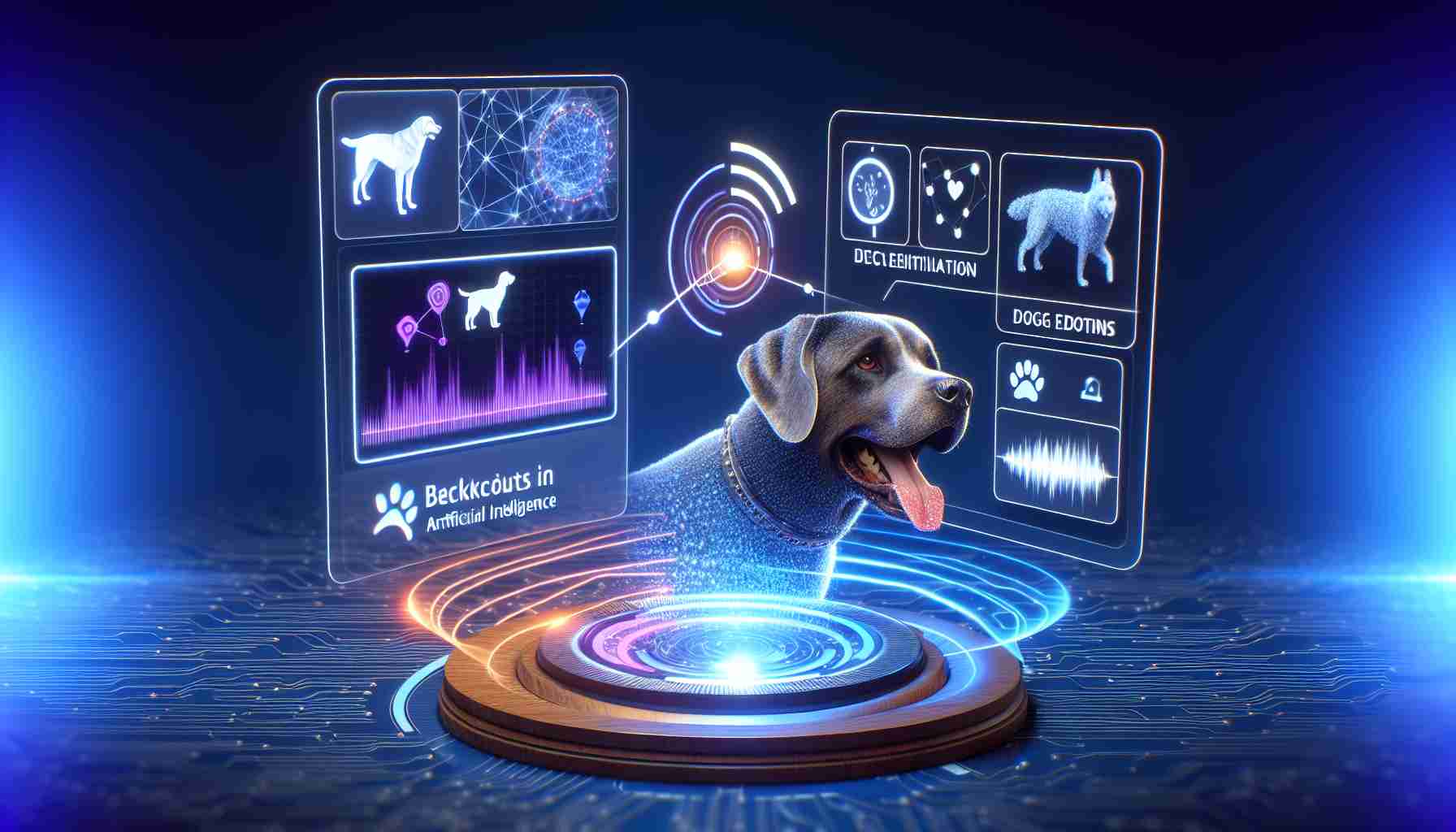Researchers have made significant strides in interpreting the meaning behind dog barks, using artificial intelligence as a tool to delve into the minds of our four-legged companions. This discovery paves the way for enhancing our interactions and care for dogs by recognizing their vocal expressions.
Understanding Canine Communication
The field of study concerned with animal communication is being reshaped with the aid of AI, significantly broadening our awareness of what dogs are attempting to express. The use of machines learning applications, particularly one known as Wav2Vec2, has proven that technology originally developed for comprehending human language can be adapted to interpret the acoustic signals of dog barks.
Overcoming Data Scarcity Challenges
A considerable hurdle in the path of developing AI for animal sounds has been the limited availability of quality data. Collecting large volumes of animal sounds is logistically challenging as compared to recording human speech. AI technologies that have mastered human language nuances are now cross-applied to discern patterns in dog vocals.
Study and Results
In an innovative study involving a diverse sample of 74 dogs in various contexts, the researchers harnessed the power of the Wav2Vec2 model. This tool, initially trained on human speech, successfully categorized barks into distinct classifications, discerning emotional states such as playfulness or aggression, as well as identifying a dog’s age, breed, and gender with up to 70% accuracy.
Implications for Animal Welfare
These findings have significant repercussions for animal welfare. Understanding the specific message a dog is conveying through its bark can improve our responsiveness to their emotional and physical requirements, potentially preventing dangerous situations. This novel application of human speech analysis models to understand animal vocalizations stands to revolutionize the way we interact with and care for our canine friends.
Key Challenges
One of the most significant challenges associated with using AI to understand canine barks is the lack of substantial and varied datasets. Collecting ample dog vocalization recordings that cover diverse situations, breeds, and individual behaviors is particularly difficult. Furthermore, since AI models like Wav2Vec2 require large amounts of data to learn patterns accurately, this scarcity is a substantial roadblock.
Another issue is the individual variation among dogs. Unlike human language, which has clear syntax and grammar rules, canine vocalizations can vary widely not only across breeds but also from dog to dog. This makes it challenging for AI to generalize and accurately interpret barks without extensive and representative training data.
Controversies
One potential controversy surrounds the ethics of interpreting animal communications. Some might argue that using technology to interpret dog barks could lead to an invasion of the animals’ own means of expression or privacy. There are also concerns about proper implementation: ensuring that the technology is used to enhance dog welfare and is not misapplied or misunderstood by the general public.
Advantages
The ability to understand canine vocals using AI offers several advantages. It could lead to improved human-dog interactions, better training programs, and enhanced safety by allowing owners and professionals to respond more appropriately to a dog’s needs and emotional states. Such technology could also benefit veterinary medicine by providing non-invasive ways to assess an animal’s well-being.
Disadvantages
A disadvantage of relying on AI for interpreting dog barks is the potential for misinterpretation, which could lead to incorrect assessments of a dog’s behavior, causing confusion or distress. Additionally, access to this technology could become an issue, potentially creating a divide between pet owners who can afford to use such services and those who cannot.
For those interested in exploring further into this field, related information can be found by visiting websites like:
– American Kennel Club
– ASPCA
– Animal Welfare Institute
Please note that direct access to studies or articles detailing the specific AI breakthrough may not be available on these main domain pages but they are relevant resources for dog welfare and broader animal communication research.

